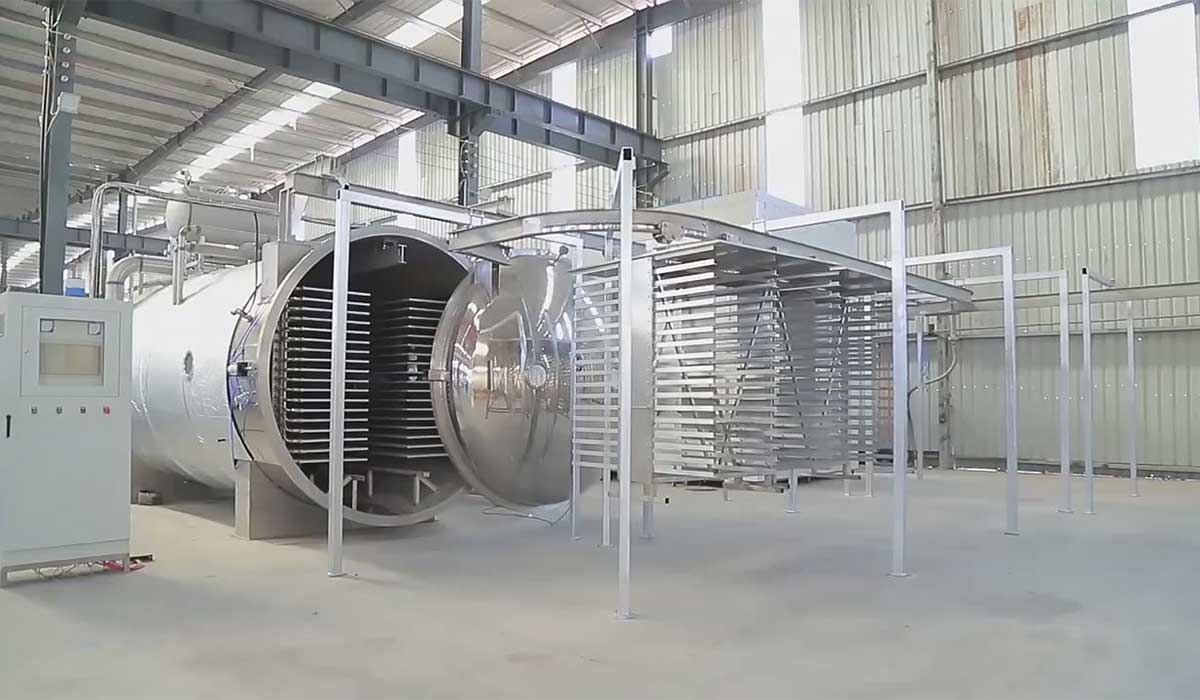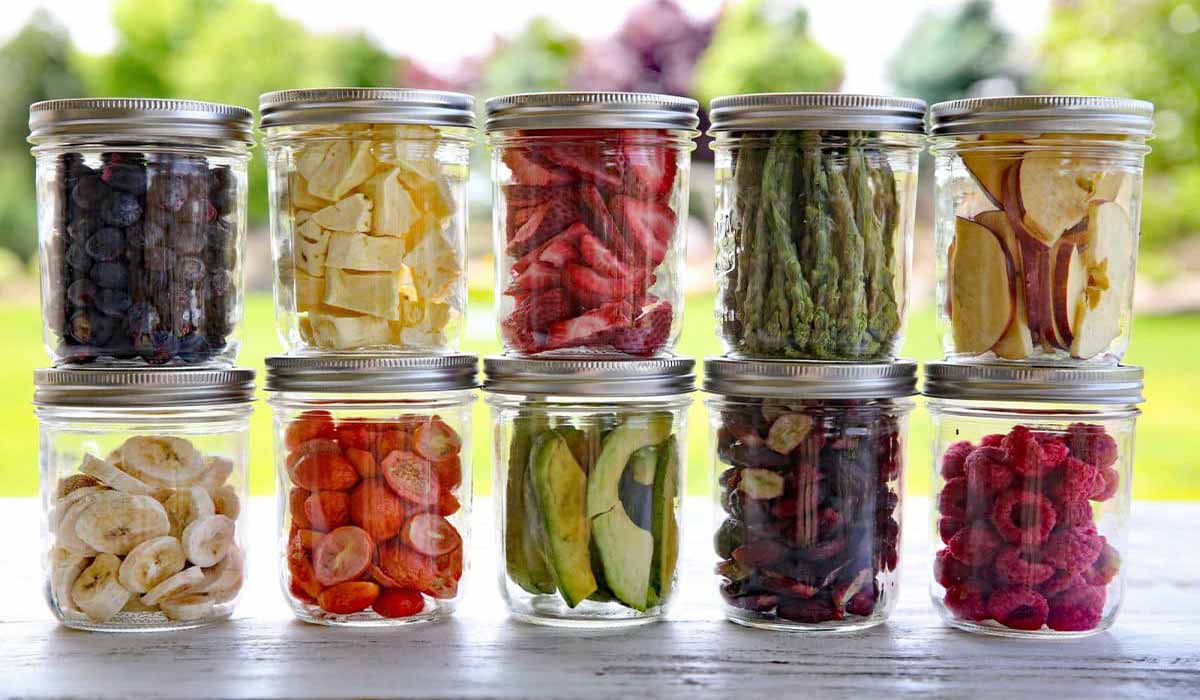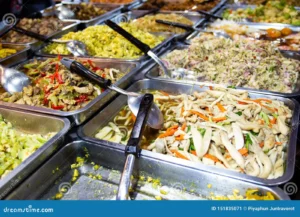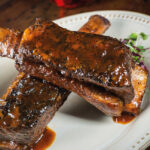Meals renovation is an crucial ability, whether or not you want to enjoy homegrown fruits and vegetables out of season or % light weight backpacking food.
Two common methods are dehydrating and freeze drying, however are meals dehydrators and freeze dryers the equal appliance? let’s take an in intensity take a look at how each works and evaluate the consequences.
The technology in the back of Dehydrating and Freeze Drying
At their middle, every food dehydrators and freeze dryers dispose of moisture from food to halt bacterial boom and decomposition. However, they accomplish this thru distinctive medical procedures:
Dehydrators use low warmth air flow to dry ingredients. They skip air round 95-a hundred and fifteen degrees Fahrenheit thru a chamber containing meals laid out on racks.
The warm air attracts moisture from the floor of the food and circulates it out of the unit, leaving dried snacks in the back of. this may take 24 hours or longer depending at the meals and moisture degree.
Freeze dryers use sublimation, in which water transitions without delay from a stable to vapor without entering the liquid level. Ingredients are flash frozen then positioned in a vacuum chamber.
Next, the pressure is dropped dramatically, causing the ice to sublimate from the frozen food. This process can take 2-5 days but results in highly shelf stable items that retain texture, flavor and nutrients.
| Method | Temperature | Time | Resulting Product |
| Food Dehydration | 95-115°F | 12-48 hours | Lightweight but requires rehydration |
| Freeze Drying | Flash frozen then vacuum dried | 2-5 days | Very lightweight and shelf stable |
As you can see in the table above, the core differences are in temperature used and length of the process. Dehydration is quicker but yields less stable items while freeze drying produces highly durable foods.
How Dehydrators And Freeze Dryers Are Used
Beyond the scientific level, these preservation methods play different roles in home and commercial food production:
Food Dehydrators: Inexpensive countertop models starting around $50 allow homeowners to easily dry excess produce from their garden.
Fruits like apples and bananas as well as herbs and jerky are commonly dehydrated. The process maintains much of the original texture, flavor and nutrients. Dehydrated goods last 1-2 years in a cool, dark pantry.
Freeze Dryers: While expensive household freeze dryers exist starting around $3,000, this technology is more commonly found in industrial settings.
Freeze drying produces extremely lightweight backpacking/camping meals by preserving meats, vegetables and instant potatoes. The items can last 25+ years sealed and unopened due to complete moisture removal.
Case study: One adventurer reported freeze dried backpacking meals were a “life saver” on long trips into remote areas where fresh food wasn’t available. The meals rehydrated quickly and curbed hunger despite being highly condensed.
In summary, both food dehydrators and freeze dryers enable long term food storage. But the latter’s higher costs and longer processing times reserve it mainly for industrial or expedition use cases compared to countertop dehydrators suited for home food preservation.
Comparing Dehydrated to Freeze Dried Foods
Besides production method differences, the end products have notable qualities to consider:
Rehydration time: Freeze dried meals rehydrate nearly immediately with the aid of including boiling water. Dehydrated meals may also take 15 half hour to fully reabsorb water due to higher residual moisture levels.
Mouthfeel: Dehydrated fruits especially can be tough or rubbery after rehydrating. Freeze drying captures a nearer to fresh texture in fruits and vegetables due to ice crystallization prevention.
Weight savings: Freeze dried meals are the ultimate in lightweight backpacking cuisine at 95% total weight reduction on average. However, dehydrated goods are significantly lighter than their fresh or canned counterparts.
In addition to testing various results anecdotally, some sources suggest blind taste tests show a preference for the fresher flavors achieved through freeze drying versus dehydration alone. But both outperform cooking or canning nutrition wise.
Equipment and Operating Costs: Dehydrators vs Freeze Dryers
When considering long term costs beyond the initial appliances, preservation methods differ as well:
Equipment: Home countertop or stackable food dehydrators range from $50-200. Commercial dehydrators reach $500-2,000. Household freeze dryers start around $3,000-$5,000 while industrial machines cost $50,000 or more.
Operating: Dehydrating is virtually free besides electricity to run the dehydrator. Freeze drying incurs both electricity and the cost for replacing vacuum pump oil and seals over 5-10 years of heavy usage.
Food costs: Once the appliances are paid off, preserving excess homegrown foods basically eliminates these preservations’ material costs versus purchasing comparable store-bought foods. Freeze drying raw ingredients requires more startup capital initially.
As the table below summarizes, while freeze drying produces highly stable and lightweight end products ideal for backpacking, its significantly higher costs of equipment and operation generally relegate it to commercial production versus home food storage for the average consumer.
| Category | Food Dehydration | Freeze Drying |
| Initial Cost | $50-200 for home unit | $3,000-$5,000 for home unit |
| Operating Cost | Electricity only | Electricity, vacuum pump maintenance |
| Food Cost | Free from garden | Requires capital to freeze dry raw foods |
| Ideal Usage | Home food storage | Industrial, outdoor expedition cuisine |
Frequently Asked Questions
To summarize the key differences discussed, freeze dryers and food dehydrators both preserve foods through moisture removal. However, their underlying scientific processes, required equipment levels, costs and intended usages differ notably.
Freeze drying yields highly stable, lightweight results through sublimation best suited for professional or long expedition uses. Meanwhile, modestly priced home dehydrators allow preserving homegrown foods economically through low heat drying for pantry storage.
With the higher costs and intensive effort required, freeze drying is not generally a substitute for a countertop dehydrator in most home kitchen applications. Still, both techniques enable enjoying seasonal ingredients year round when properly stored.
With their variances understood, dehydrating and freeze drying each have appropriate roles to play in preserving seasonal bounty or planning wilderness meals.















